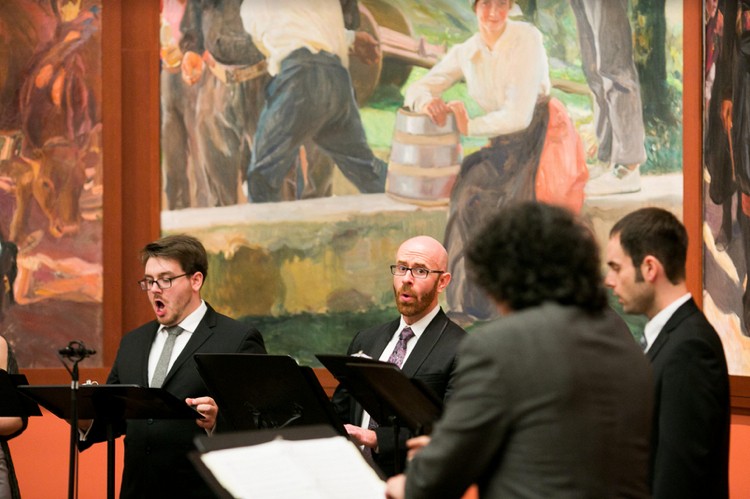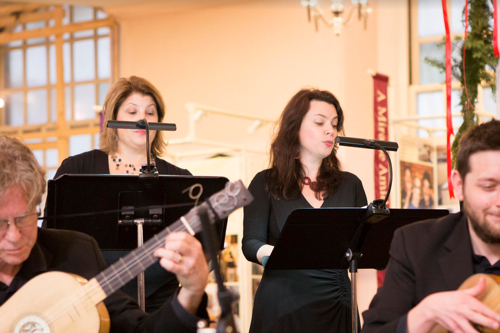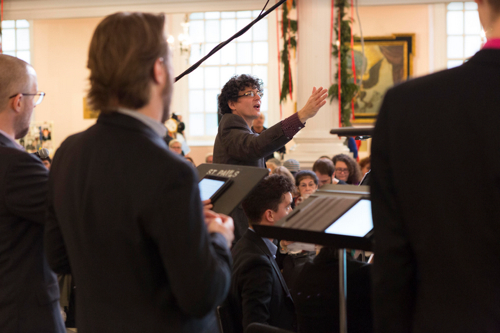
Seventeenth in our series of guest articles marking Early Music Month
By Sebastian Zubieta
Music was created and performed abundantly in the Latin American colonies from immediately after the arrival of the first European occupiers. Churches, monasteries, theaters, and town squares reverberated with the sound of music: imported at first, the music gradually became more and more locally composed, performed by native and foreign-born musicians, enslaved or free. Naturally, there is a great deal of Catholic liturgical music in Latin, but even more numerous are villancicos; unfortunately, operatic and theatrical music for operas is not as readily recoverable.
The villancicos are an extremely popular musical and poetic form born in Spain sometime in the Renaissance that, by the end of the 1400s, was the main musical form used by Spanish composers and poets. It remained extremely popular until the end of the 18th century, when, as with all things musical, it ceded the preeminent place to other styles. These villancicos were also imbued throughout by a strong dramatic feel, as if they were small theatrical plays in which we can observe dialogue between characters in a scene such as a Christmas procession or a Mass.

In other contexts, such as the rural missions that flourished in several parts of the continent, priests used music as a tool to make Catholicism more agreeable to the natives, who showed extraordinary musical facility and enthusiasm. Of course, this is the more or less typical use of music in any Western society of the modern era (catechism, entertainment, liturgy). Yet, by reading standard English-language Western music histories, one would think that a third of the population of the Western world, living in cities larger than many in Europe — with tremendous liturgical and dramatic activity — produced almost no music for 500 years. Naturally, this is not the case, and archives throughout Latin America, from the North American deserts to the Southern Cone, are a testament to the level of artistic activity and achievement that was enjoyed in the Viceroyalties.
There are important collections in the expected places, such as cities that have been centers of culture for centuries, like Mexico, Puebla, and Bogota, as well as the towns of the Silver Road from the Andes to the River Plate, but also in unexpected locations, such as the small parishes of Huehuetenango in northern Guatemala or the Bolivian Chaco, where a few decades ago musicologists discovered the largest trove of baroque music in the Americas, with pieces from neighboring Jesuit missions.
I established Americas Society’s vocal ensemble Meridionalis in 2010 precisely to explore this repertoire, heard infrequently in the US. To date, we have presented music from the late 16th to the early 19th centuries from Bolivia, Brazil, Colombia, Guatemala, Mexico, and Peru throughout Manhattan, as well as in Bogota and Havana. Next month, the ensemble will tour Havana and Quito to perform concerts in collaboration with Ars Longa de La Habana and Lipzodes.
The upcoming Mid Atlantic Foundation USArtists International tour opens in Havana with Y de la esfera más alta…, a program prepared by Guatemalan musicologist Omar Morales Abril that offers a trajectory from shadows to light through motets and villancicos drawn from archives in Guatemala, Mexico, Spain, and Bolivia. The concert begins with a series of Easter motets by Hernando Franco and Gaspar Fernandez that, dating to the late 16th century, are among the earliest scores preserved in the hemisphere, before moving onto Immaculate Conception and Christmas villancicos by Fernandez and Carlos de Borja y Aragón, among others, that reflect on ideas of light and celebration.

Among the highlights of the concert are a bilingual reinterpretation of the Salve Regina text by Diego de Cáseda that alternates the Latin prayer by a choral group with a paraphrase by two soprano soloists, as well as a meditative setting of the Lenten Psalm “Circumdederunt me,” written in Guatemala in the late 1500s by Hernando Franco on the story of a celestial fight for Mary’s favor between the sun, the moon, the stars, and dawn, featuring a supremely euphonic obbligato for violoncello. The performance in Havana will be in collaboration with the singers and instrumentalists of the acclaimed Cuban ensemble Ars Longa, whose recent U.S. debut tour was produced by Americas Society and GEMS.
The second program will be dedicated to music recently discovered in the Ecuadorean city of Ibarra, some 60 miles north of Quito. This concert includes a combination of mostly anonymous motets and villancicos for chorus and various combinations of soloists, following a similar trajectory from darkness to light, which is the theme of this year’s Festival de Música Sacra de Quito, our hosts for the second part of the tour. The program includes solo songs that will spotlight Meridionalis sopranos Molly Quinn and Nell Snaidas and tenor Brian Giebler, as well as polychoral works in which Meridionalis sings antiphonally with the instrumental ensemble Lipzodes. This program will be performed in Quito on April 5 at the 16th-century church of San Agustin in the Old City.
More information on the tour can be found on our website.
Sebastián Zubieta has been the music director at Americas Society since 2005. He has presented papers on Baroque and contemporary music at congresses including the International Musicological Society (2002 and 2017), the Society for American Music (2011), the Latin American Studies Association Conference (2015 and 2016). He has taught hearing and analysis as well as music appreciation at Yale University, music history at the Universidad de Buenos Aires, and composition at the Universidad Nacional de La Plata in Argentina. He made his New York conducting debut to critical acclaim with Meridionalis at the Look and Listen Festival in 2010, and has conducted at Symphony Space’s Wall-to-Wall, the Raritan River Valley Festival Festival, the Festival de Música Sacra de Quito, the Festival Esteban Salas in Havana, and the Centro de Experimentación del Teatro Colón. His music has been performed in concerts and festivals in Europe, Korea, Latin America, and the United States. He has written music for ICE, the Centro Cultural General San Martín (Buenos Aires), the New York Miniaturist Ensemble, the Bugallo Williams Piano Duo, and the Damocles Trio. He was in residence at Banff Centre and was a fellow at the Composers Conference at Wellesley College. He holds a doctorate in composition from Yale University and a licentiate in musicology from Universidad Católica Argentina in Buenos Aires.

